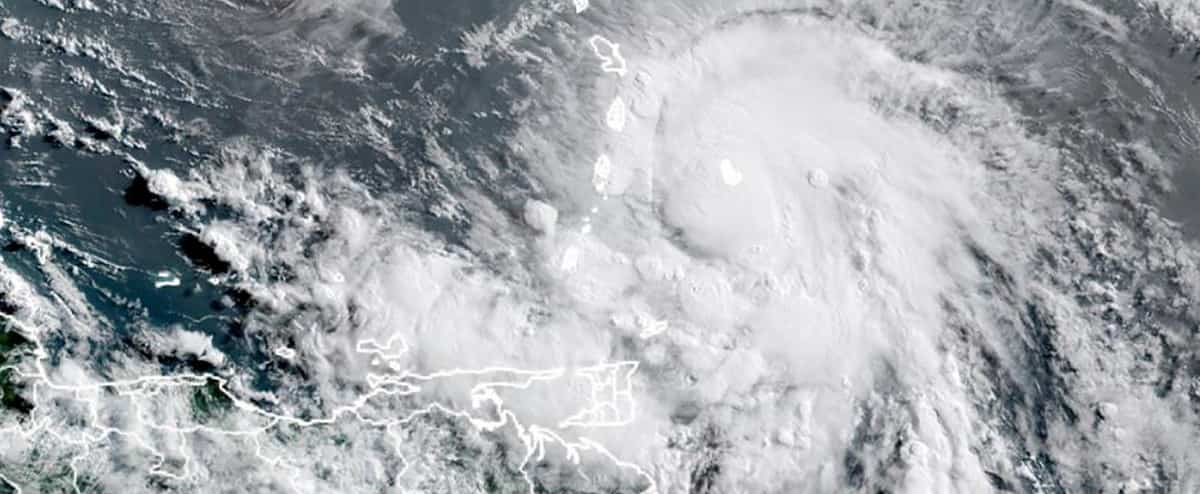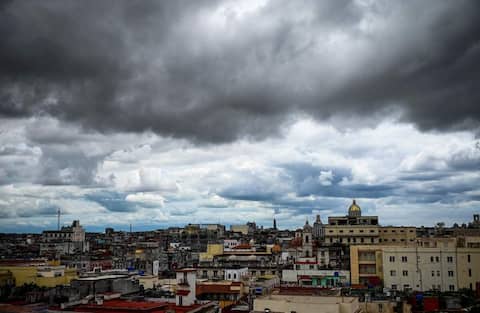Tropical Storm Elsa left Cuba on Monday evening, leaving torrential rain in its wake, but without causing significant damage to the island, and was heading toward Florida after three people were killed in the Caribbean over the weekend.
• Read also: Florida building collapse: 27 dead, chances of finding survivors ‘close to zero’
• Read also: Storm Elsa kills at least three in the Caribbean
At about 9 p.m. local time, the storm returned to the sea in the village of Santa Cruz, in Mayapeque province, near Havana, after crossing the island from south to north for seven hours, the Cuban National Institute of Meteorology (Insmet) announced.
With “strong winds of up to 85 km/h,” the US National Hurricane Center said, it was “moving northwest at 20 km/h.”
Havana and its residents had braced for possible rain and flooding, which were still suspended on Monday evening: businesses in the capital were closed at midday and public transport was suspended, and private vehicle trips were also banned, except for civil defense or rest trips.
Some residents have housed their furniture, especially those living on the ground floor or on the Malecon, Havana’s famous seaside avenue at risk of submersion, according to pictures broadcast on television and on the Internet.
After killing three people in the Dominican Republic and Saint Lucia, Elsa struck Cuba at 2 p.m. local time in the Sinaga de Zapata National Park, in the Matanzas (west) region, according to the NHC.
‘Very heavy rain’
As a precaution, more than 100,000 people – mostly in low-lying or coastal areas – have been evacuated to safety, a task complicated by the coronavirus pandemic, as Cuba faces a sharp rebound in the number of new cases.
On Monday, Prime Minister Manuel Marrero said, “Protecting against Elsa does not mean lowering your guard against Covid-19.”
Cuba, which has so far been little affected by the disease, has seen the number of cases rise in recent weeks, reaching a total of 207,322 cases, including 1,372 deaths out of a population of 11.2 million.
According to experts from Insmet, the storm is accompanied by a massive mass of clouds that threatens to cause torrential rains in western and central Cuba within the next 48 hours.
The danger is that this rain will fall on soils already saturated with summer precipitation in the previous days, potentially causing flooding.
According to TV, the village of Jibacoa, in the Manicaragua mountain massif (Villa Clara province, in the center), was cut off from any external port by rain, but overall the storm did not cause significant damage to the island.
Expected strength in Florida
On the contrary, this water falling from the sky made it possible to fill certain reservoirs in the country, which received, between Sunday and Monday, “an additional 68 million cubic meters,” noted Argelio Fernandez, an expert at the National Institute of Water Resources (INRH).
“In the case of Havana, it suits us (whether it is raining) as long as it is not the heavy rain that generates the floods,” he said.
Moving away from Cuba, Elsa has to go overnight from Monday to Tuesday in the Gulf of Mexico. The center warned of an expected “intensification”, warning of “hurricane tides on the west coast of Florida” with “a risk of flooding” within the next 48 hours.
“Hurricanes are likely to occur Tuesday in the south and the Florida peninsula,” he said.
Elsa’s path in the United States is typical for hurricanes that pass through Cuba between June 1 and November 30, the traditional season for these storms in the Atlantic.
This prompted the two countries’ meteorological centers to cooperate and exchange information, despite diplomatic tensions between Washington and Havana, as the topic is a matter of national security.

“Extreme twitteraholic. Passionate travel nerd. Hardcore zombie trailblazer. Web fanatic. Evil bacon geek.”



